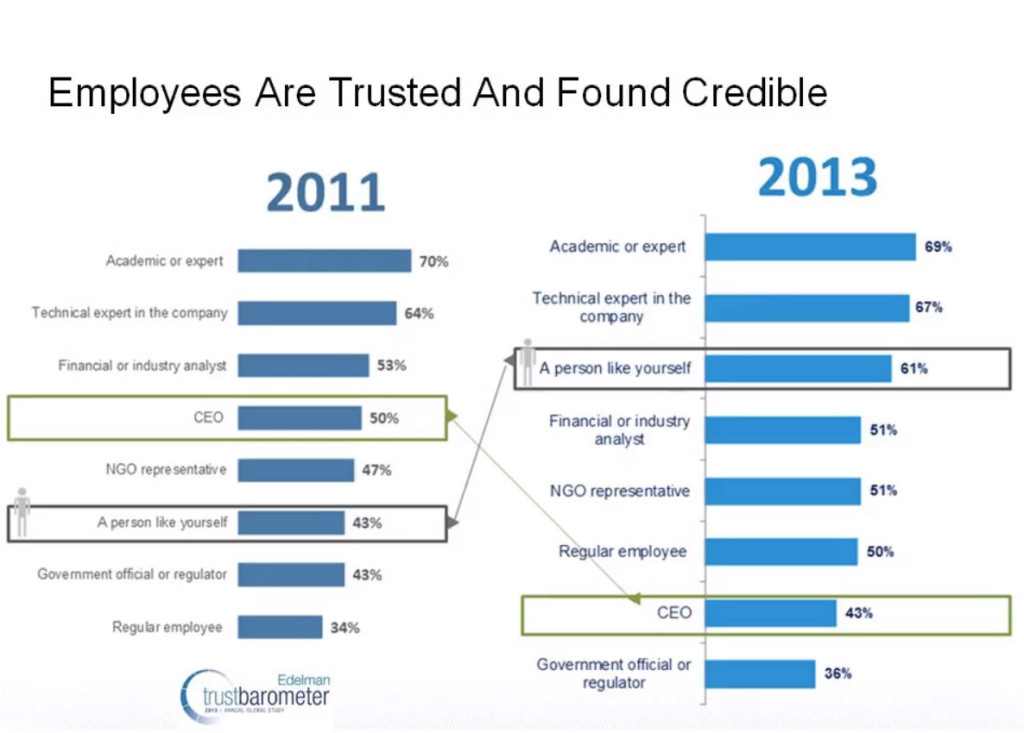As most content marketers know, building an audience can feel completely overwhelming. After all, consumers are being inundated from every direction with marketing messages — an average of 3,000 every day, estimates Michael Brito, a group director at WGC and author of “Your Brand: The Next Media Company.” So how can brands make sure their messages cut through the clutter?
In a recent webinar, “Brand Storytelling: Leveraging Employees To Scale the Content Engine,” Brito encouraged starting with the people under your own roof — your employees. Often, they can be the advocates that serve as the building blocks for your brand’s audience.
Think about it: If your friend works for Apple, wouldn’t you go to her with questions or advice about their products? And wouldn’t you trust her? Most people would — 92% of consumers trust peer recommendations, Brito noted.
And while you might be wary of your friend’s bias as an Apple employee, employees are trusted significantly more than executives, Brito said, showing a slide from an Edelman Digital survey in which 50 percent of consumers said they trust regular employees vs. 43 percent for a CEO.

By turning their employees into brand advocates, companies can feed their content engine with trusted sources, Brito said. The content can be anything from answers to Twitter questions, a blog from a trade show, or Instagram photos of a new product. Brito gave the example of H&R Block, which has empowered its mostly-seasonal employees to reach out to local customers via social networks on a year-round basis. The goal is to attract repeat business come tax preparation time.
So, how can brands follow the H&R Block’s lead and leverage their employee advocates as content producers? Brito outlined a four-step approach:
– Brand goals: Clearly document business goals, determine the scope of the initial project, and get sign-off from senior management so that everyone is on the same page for the advocacy program.
– Brand narrative: Research your audience to help determine content themes — where do they spend time online, what kind of posts do they respond to, etc. Then develop best practices for employee training.
– Content operations: Find the right technology to create a workflow that makes sense for the company and employees.
– Media distribution: Align the content to the proper digital channels — such as photos posted to Instagram, long-form content to a corporate blog, and videos to YouTube.
As Brito noted, consumer advocacy is the No. 1 influencer of sales. Empowering employees to reach out to their fellow consumers makes it far more likely that your brand message cuts through all the marketing noise and clutter.
The Content Strategist is our brand’s story. What’s yours? Let us help you find the answer.
Image by
DawnAllynn / Flickr.com